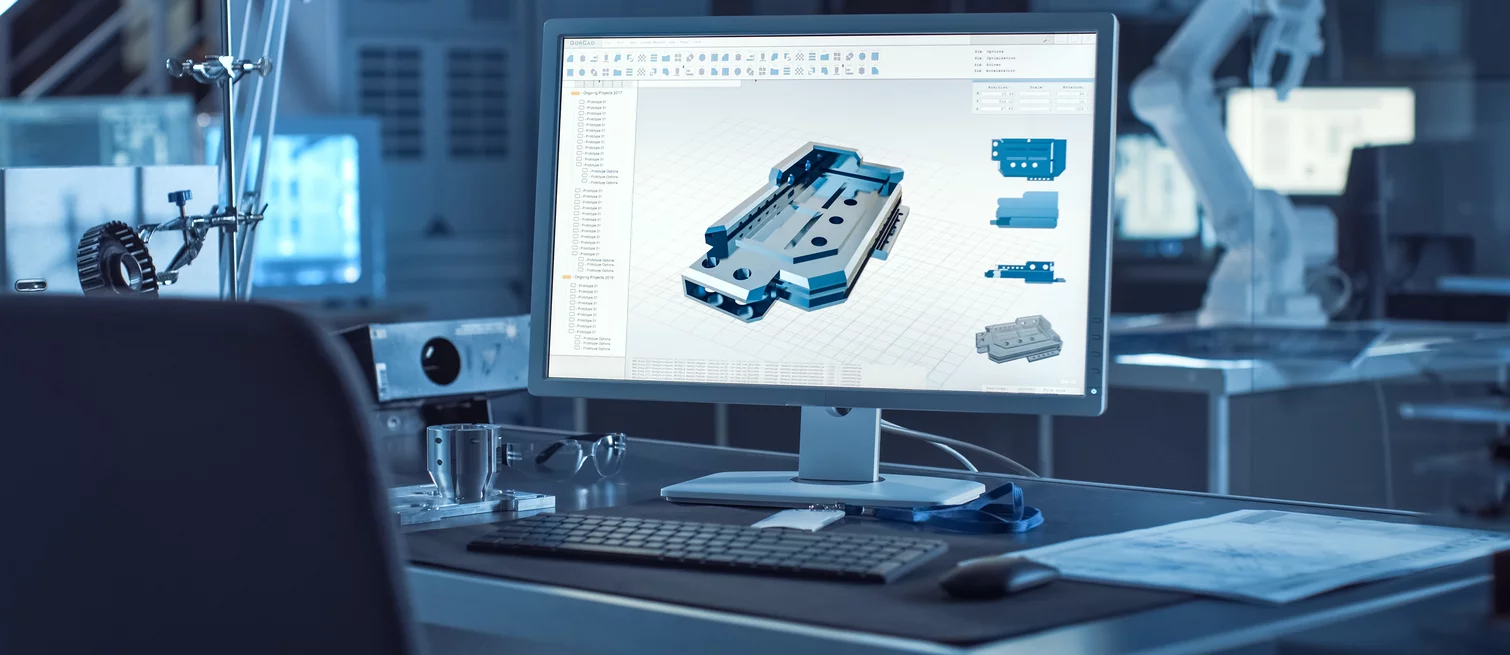Design for manufacturing, topology optimization and reverse engineering
Maximum possible weight reduction with increased component strength - In the classic development and construction of ceramic components, prototypes must be designed and subjected to material tests before they are used. If these tests are negative, it is necessary to modify the design. This iterative process can be repetitive, extending the time to market and increasing development costs. With the help of simulation, components can be tested virtually in their design state before the first prototype is produced, drastically reducing development times and costs. The use of the finite element method (FEM), a computer-aided calculation method for optimizing the design of the component, has proven its worth here.

Increased Performance through Weight Savings
Designing components that are application-optimized, cost-oriented and conserve resources is becoming increasingly important. Design for manufacturing, suitable ceramic materials and additive manufacturing from Schunk Technical Ceramics make it possible.
When manufacturing a product, the application environment, material properties, component complexity, and subsequent production volumes and cost targets must all be taken into account. It is not always clear at the outset what the solution will look like. However, since the numerous manufacturing processes, different materials and machining technologies open up countless possibilities, it is important to set the right course right from the start. Based on the expertise and many years of experience of Schunk Ceramics, it is determined right at the beginning which material is particularly suitable, which shaping process provides the optimum in terms of costs and design freedom Further tools are available to the customer at Schunk for application-optimized design. These include FEM-supported topology optimization and bionic designs made possible by Schunk's unique IntrinSiC® 3D printing.
The result is a product that is optimized for the requirements and can be delivered cost-effectively in sufficient quantities within the required timeframe.
Topology optimization and bionic design
For mechanical engineering, metrology, aerospace, and defense, weight reduction plays a major role. Thanks to bionic component optimization, it is possible to give components greater rigidity, functionality, dynamics and safety while keeping their weight low - and save on material costs at the same time. Weight-optimized designs inspired by nature are now also possible in ceramics. Thanks to Schunk's innovative IntrinSiC® 3D printing and Finite Element Simulation (FEM)-assisted topology optimization service, unique ceramic bionic designs are created.
Computer-based topology optimization is used in product development to identify areas of a component that are subject to low loads and where the material thickness can be reduced. In areas of high stress, additional material or additional design elements are provided. Following the principle of bionic design, components are designed on the basis of nature's adaptability in such a way that they have a high level of stability and functionality while using relatively little material.
Topology optimization and additive manufacturing
Since strength calculations of complex components are time-consuming and costly, as well as requiring appropriate software and comprehensive materials know-how, Schunk Ceramics is happy to take on this task for you. Thus, the result of the topology optimization in the form of CAD data can be validated by us through an FEM calculation/analysis. Simulation expertise and additive manufacturing processes from a single source accelerate your development process.
Innovative possibilities of reverse engineering
When design data is missing, reverse engineering turns the development process around: The component surface is digitized using the 3D scanner and converted into a CAD surface model. The CAD model can then in turn be optimized with topology optimization based on bionic principles, validated with FEM calculation and realized in the 3D printing process.
